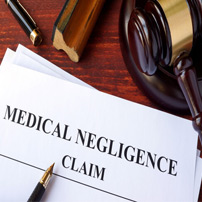How to Avoid a Misdiagnosis
February 27, 2018 Doctors often diagnose an illness based on the symptoms that the patient is suffering from, as well as the patient’s age, family history, and other information that can help accurately identify the problem. However, oftentimes, patients have symptoms that are nonspecific, like headaches, muscle or joint pain, or stomach discomfort that leave physicians just as confused and troubled as the patient. While there are diagnostic tests that can confirm certain conditions or diseases, they tend to be very expensive, and are not always fully accurate. Not all conditions are difficult to diagnose, although some are more common than others.
Doctors often diagnose an illness based on the symptoms that the patient is suffering from, as well as the patient’s age, family history, and other information that can help accurately identify the problem. However, oftentimes, patients have symptoms that are nonspecific, like headaches, muscle or joint pain, or stomach discomfort that leave physicians just as confused and troubled as the patient. While there are diagnostic tests that can confirm certain conditions or diseases, they tend to be very expensive, and are not always fully accurate. Not all conditions are difficult to diagnose, although some are more common than others.
Most Commonly Misdiagnosed Illnesses
The earlier you can obtain an accurate diagnosis, the sooner you and your doctor can determine the most effective treatment options. If you have been diagnosed with any of the following conditions, you may want to consider a second opinion or talk to your doctor about the possibility that it could be something more serious.
Panic Attacks
Patients suffering from anxiety, shortness of breath, and chest pain are often diagnosed as having a panic attack. While this is certainly true in some cases, it can also indicate something much more serious. These symptoms can also be a sign of a pulmonary embolism (PE), which is a blood clot that travels through the bloodstream and into the lungs, causing respiratory difficulties. According to one study, 33.5 percent of patients with a PE were either sent home or admitted to the hospital with an incorrect diagnosis.
Fibromyalgia
Common symptoms of fibromyalgia include migraines, muscle pain, fatigue, and facial tenderness. It is also possible that a patient suffering from these, and other symptoms may have Lyme disease. Additional symptoms of Lyme disease include joint pain, brain fog, and seizures. One physician from Rhinebeck, New York, estimates that the number of Lyme disease cases that have been misdiagnosed as fibromyalgia is as high as 40 percent.
Irregular Periods
Many women experience an irregular and unpredictable menstrual cycle. However, if there are other symptoms, including weight gain and unwanted hair, or if the patient is having trouble getting pregnant, it could be a condition known as polycystic ovarian syndrome (POS), which is an endocrine disorder that affects eight percent of women who are of childbearing age.
Migraine Headaches
In addition to the actual headache, patients who suffer from migraines often see spots or light flashes. They may also experience a tingling sensation in the limbs and become nauseous. These are also symptoms of a stroke. According to a Professor of Family Medicine at SUNY Upstate Medical University in Syracuse, both can occur when circulation to the brain has been interrupted. However, strokes develop more quickly, and are more likely in older patients who have a history of smoking, high blood pressure, and high cholesterol.
Celiac Disease
Because many of the symptoms of celiac disease are rather vague, including bloating and abdominal pain, other conditions may be overlooked. However, if a patient is suffering from any of these symptoms, they should consider getting checked for ovarian cancer, as many of the symptoms are similar.
Baltimore Medical Malpractice Lawyers at LeViness, Tolzman & Hamilton Represent Patients Who Have Been Misdiagnosed
If you have a health condition that was misdiagnosed by a healthcare professional, contact the Baltimore medical malpractice lawyers at LeViness, Tolzman & Hamilton as soon as possible. We will seek the maximum financial compensation you deserve for your injuries and ensure that the negligent party is held responsible. To schedule a free consultation, call us today at 800-547-4LAW (4529) or contact us online.
Our offices are located in Baltimore, Columbia, Glen Burnie, and Towson, allowing us to represent medical malpractice victims in Maryland, including those in Anne Arundel County, Baltimore County, Carroll County, Harford County, Howard County, Montgomery County, Maryland’s Western Counties, Prince George’s County, Queen Anne’s County, Southern Maryland, and the Eastern Shore, as well as the communities of Catonsville, Essex, Halethorpe, Middle River, Rosedale, Gwynn Oak, Brooklandville, Dundalk, Pikesville, Nottingham, Windsor Mill, Lutherville, Timonium, Sparrows Point, Ridgewood, and Elkridge.






